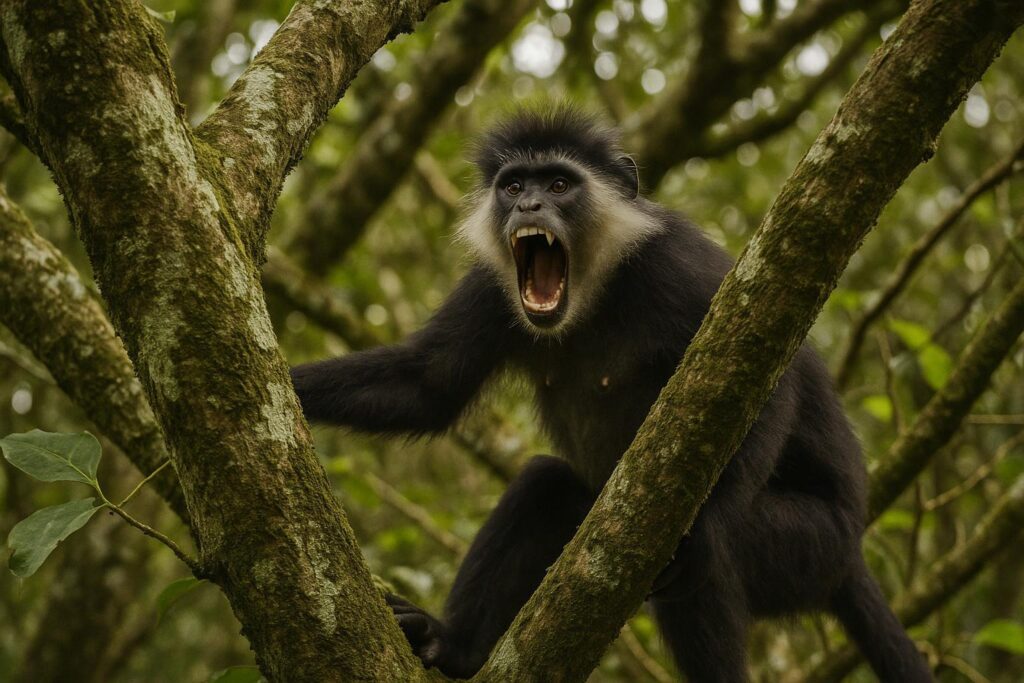A Surprising Sighting in Boma Forest
Hidden cameras in Boma National Park recently caught an unexpected visitor: Boutourline’s blue monkey, a subspecies never before recorded in South Sudan (Eye Radio, 2025).
The footage, analysed by scientists and published in the peer-reviewed African Primates journal (2025), has pushed Boma onto the global conservation radar overnight.
From Ethiopian Exclusive to Regional Resident
Until the find, experts believed this blue monkey lived only in Ethiopia, making the South Sudan groups a game-changing extension of the species’ range.
Researchers counted nearly sixty individuals across eight troops during a ground survey in December 2024, confirming a stable foothold rather than a lone wanderer.
What Scientists Saw on the Camera Traps
Images show the primate’s signature white lips, throat and ear fringes flashing through dense Boma Plateau canopy between June and November 2024.
‘This is the first record of Cercopithecus mitis boutourlinii in South Sudan,’ the authors wrote (African Primates, 2025), officially removing the monkey from Ethiopia-only status.
Officials Hail a National Victory for Nature
Colonel Charles Laku of the Wildlife Conservation Ministry called the discovery ‘a proud moment’, urging citizens to view biodiversity as a pillar of future prosperity.
Government partners African Parks were praised for their long-term management model, already applied from Malawi to the Republic of Congo.
Risks Looming Over the Great Nile Landscape
Conservationists caution that poaching, shifting agriculture, deforestation and climate shifts still threaten the wider Great Nile Migration Landscape.
They recommend upgrading Boma Forest’s legal status and partnering with surrounding communities to balance livelihoods with ecosystem health.
African Parks and Pan-African Partnerships
African Parks now manages twenty-three protected areas across thirteen countries, covering over twenty million hectares and illustrating the power of cross-border collaboration.
South Sudan’s new primate record joins a continent-wide narrative that includes successful programs in Odzala-Kokoua National Park, Republic of Congo.


